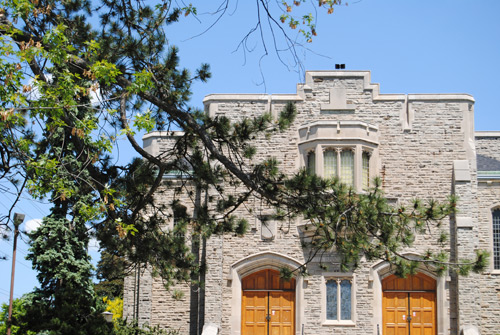
West of War Memorial Hall along College Avenue stand two Austrian pines. Both are growing in oddly beautiful forms as they try to escape the large silver maple between them. One pine is almost completely lopsided as it grows southward. The other has chosen another strategy and has thrown its limbs out in every direction, twisting and turning to impossible lengths as they reach for the sunlight. It’s almost hard to believe these trees are the same species.
Austrian pine is not an uncommon tree C in fact, you could say it=s too common. When a landscape tree is overused, whole populations can be severely damaged by pest and disease. In the case of Austrian pine, trees are badly damaged by a fungal disease called diplodia tip blight. The problem is made worse by overcrowding, and the rich dense canopy of healthy trees provides a good place for the fungus to grow, sheltered from wind and sun.
It’s now unusual to see this species with a healthy canopy of lush green needles. Instead, they tend to look almost burnt as the needles turn brownish-red until they drop off and leave a bare tree that has died prematurely. Many people will remember the Austrian pines that completely shaded Creelman Plaza as recently as 10 years ago. The rings on one tree dated to 1875.
An interesting version of the species on campus is the “golden” Austrian pine with bright yellow needle tips growing on Johnston Green about 100 metres south of the War Memorial Hall trees.